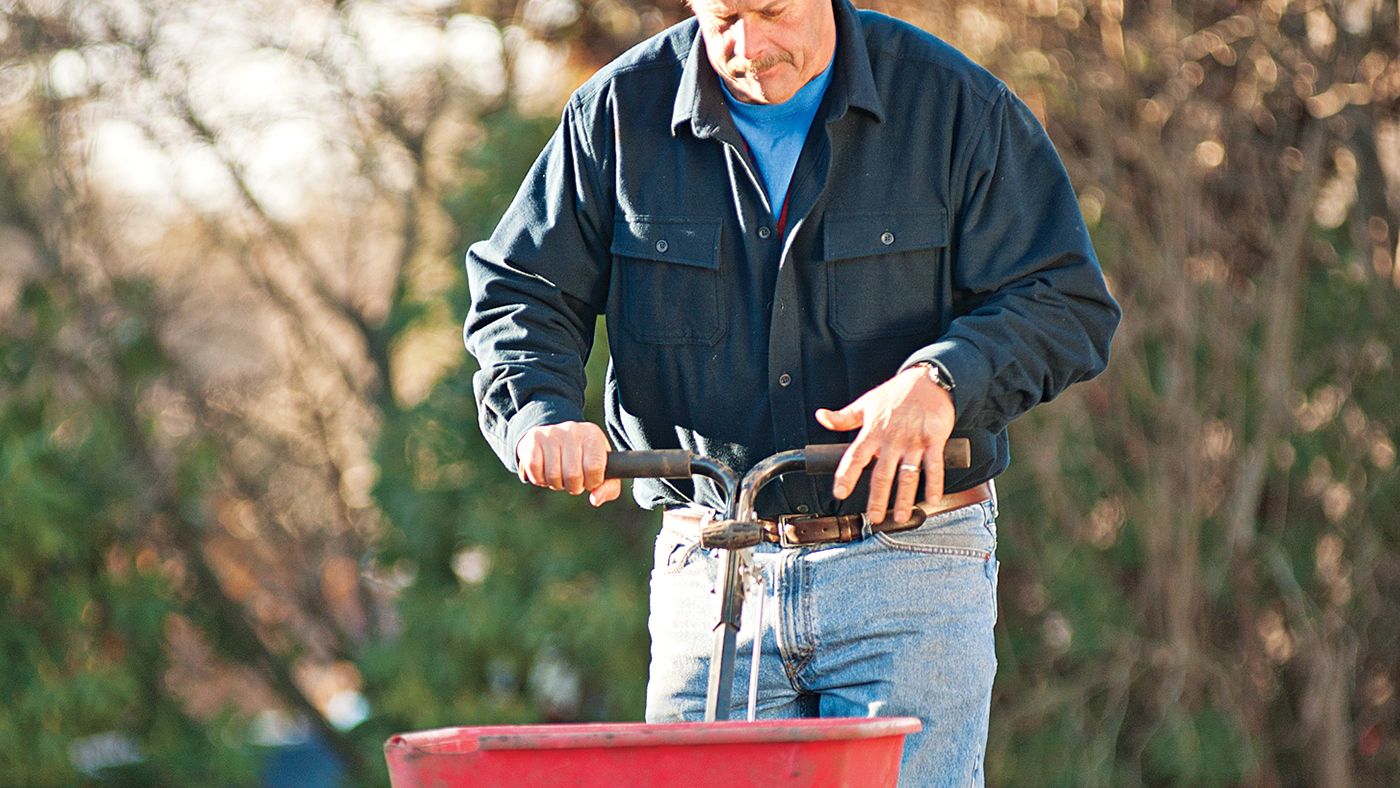We may be compensated if you purchase through links on our website. Our team is committed to delivering honest, objective, and independent reviews on home products and services.
Project details
Skill
Cost
Estimated Time
A lush, green lawn is the pride of many homeowners, but when your grass starts to show signs of distress, it can be disheartening. Yellow patches, weeds, and bare spots are common issues that plague lawns, leaving them looking tired and unhealthy. Fortunately, with the right approach and some effort, you can breathe new life into your dying lawn. This guide will walk you through the process of rejuvenating your lawn, from assessing the damage to nurturing new growth.
*Unless otherwise noted, costs in this article reflect an average of prices that our team found from hardware stores like Lowes and Home Depot, and on Amazon.com.
Project Details
Before embarking on your lawn rejuvenation project, you should understand the scope of the work involved. Reviving a dying lawn requires dedication, time, and the right tools. Along with a clear commitment to revitalizing your grass, be prepared for some manual labor, especially in removing old sod and preparing the soil for new growth.
Rejuvenating a Dying Lawn
Here are the steps on how to bring your dying lawn back to life.
1. Cut the Sod
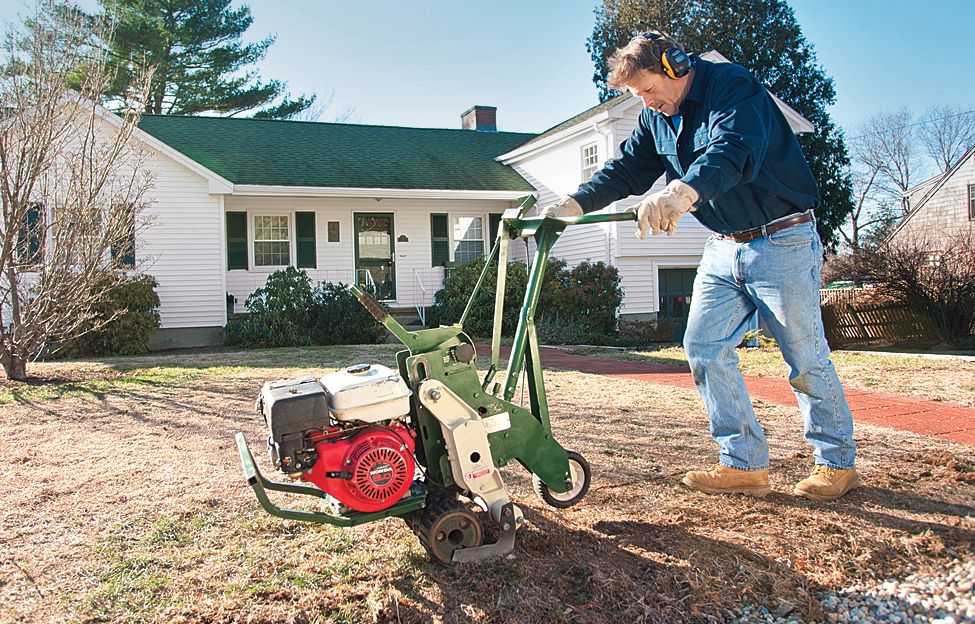
The first step in rejuvenating your lawn is to remove the existing grass. This process allows you to start with a clean slate, addressing any underlying issues in the soil.
You can rent a sod cutter from a local hardware store or garden center. This machine will slice through the grass roots, creating long strips of loose sod. When operating the sod cutter, wear sturdy shoes and be mindful of your footing. The machine can be powerful, so maintain a firm grip and a steady pace as you work.
For best results, make your cuts parallel to the lawn’s longest edge. This approach minimizes the number of turns you’ll need to make with the machine, which can be difficult. In areas close to your house or other structures where the sod cutter can’t reach, use a hoe to manually remove the grass.
2. Remove the Grass
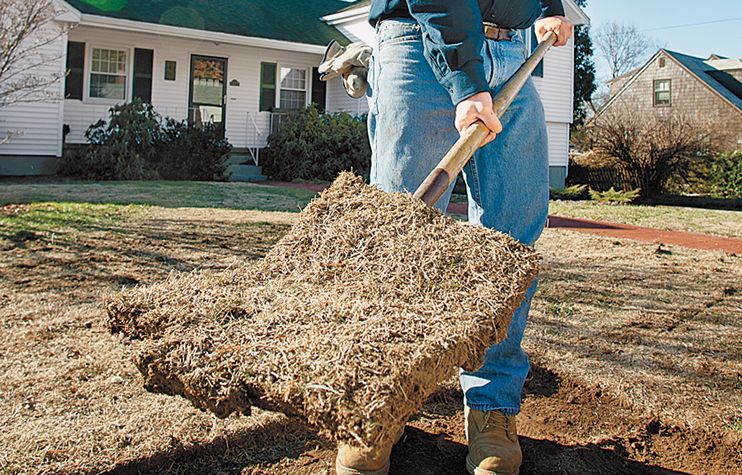
Once you’ve cut the sod, the next step is to remove it from your yard. This process clears the way for soil preparation and new seed planting. Use a spade to chop the long strips of sod into manageable 1- to 2-foot-long sections. This makes them easier to move and reduces the strain on your back.
Scoop the sod sections into a wheelbarrow. If you have a compost pile, the old sod is a valuable addition. The grass and roots will break down over time, creating nutrient-rich compost for future gardening projects.
If some areas of your lawn were in better condition, consider saving these sections. You can use them to patch bare spots in other parts of your yard, reducing waste and saving money on new sod for small areas.
3. Till the Soil
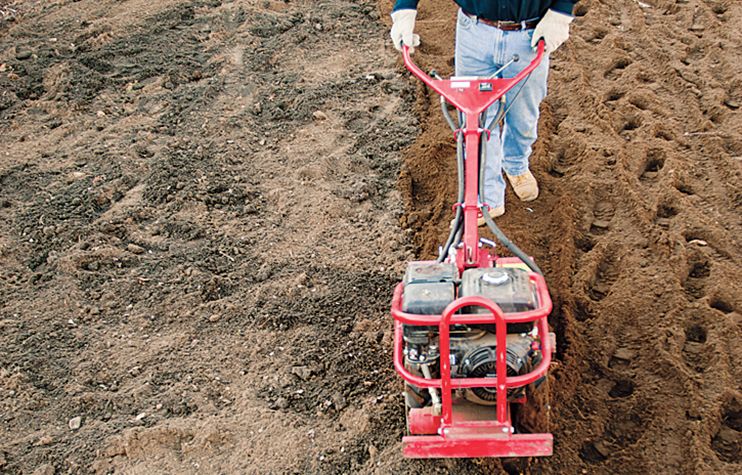
Tilling loosens compacted earth, improves drainage, and creates an ideal environment for new grass seeds to take root. For sandy or uncompacted soil, a mid-tine tiller with rear-mounted wheels works well. However, if your soil is heavily compacted, opt for a rear-tine tiller, which provides more power and deeper penetration.
Follow the same path you used with the sod cutter to minimize turns. One pass should be enough to loosen the top 2 to 4 inches of soil. Work in straight lines, overlapping slightly so you don’t miss any spots. As you till, pay attention to the soil quality. If you notice any issues such as excessive clay content or poor drainage, make a note to address these problems before seeding. Consider consulting a local gardening expert if you’re unsure about your soil composition.
In addition to tilling, aerating the soil can significantly improve its health. This process involves creating small holes in the soil to allow air, water, and nutrients to penetrate the grass roots. Aeration is particularly helpful for clay-heavy soils.
4. Spread Compost
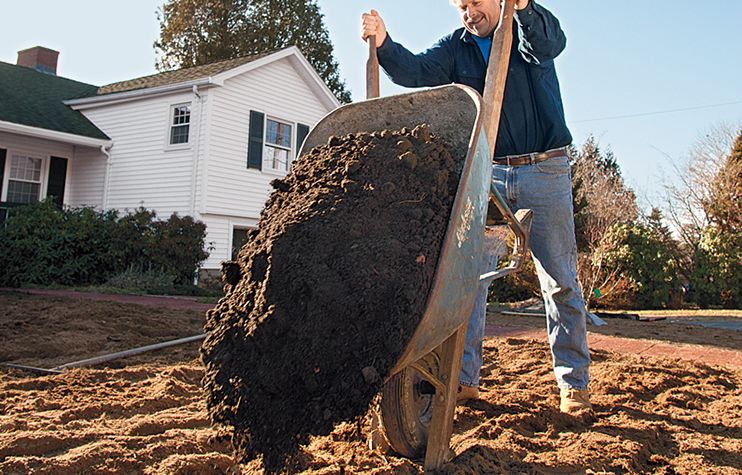
Adding compost to your soil creates a nutrient-rich environment for your new lawn. Compost improves soil structure, improves water retention, and provides vital nutrients for grass growth.
Order enough compost to cover your yard with a 3-inch layer. A good rule of thumb is 1 cubic yard of compost per 108 square feet of lawn area. Have the compost delivered as close to your lawn as possible to reduce the distance you’ll need to transport it. Use a wheelbarrow to distribute the compost evenly across the tilled area.
Select high-quality, well-decomposed compost for best results. Avoid using compost with large chunks or unfinished matter, as this can hinder seed germination and growth. For heavy clay soils, consider mixing in 1 inch of sand along with the compost. This combination improves drainage and prevents soil compaction, creating an ideal growing environment for your new grass.
5. Grade the Soil
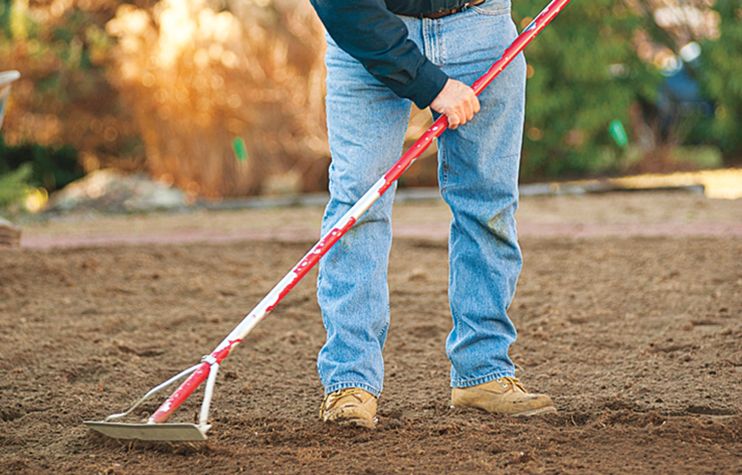
Proper grading provides even water distribution and prevents pooling, which can lead to grass die-off and soil erosion. Start with the rake handle lower to the ground, allowing the teeth to blend the compost and amendments into the top two inches of soil. This initial pass helps eliminate lumps and create a uniform soil mixture.
Once the soil is well-mixed, hold the rake handle higher to create a smooth, even surface. Take short, controlled strokes to prevent fatigue and maintain consistency across the lawn area. Pay special attention to any slopes in your yard. Make sure the grade allows water to flow away from your home’s foundation and prevents erosion during heavy rains.
Finally, walk over the graded area to identify and correct any minor depressions or high spots. This step ensures a perfectly even surface for seeding. Consider using a lawn roller to further smooth and compact the soil before spreading the seed.
6. Spread the Seed
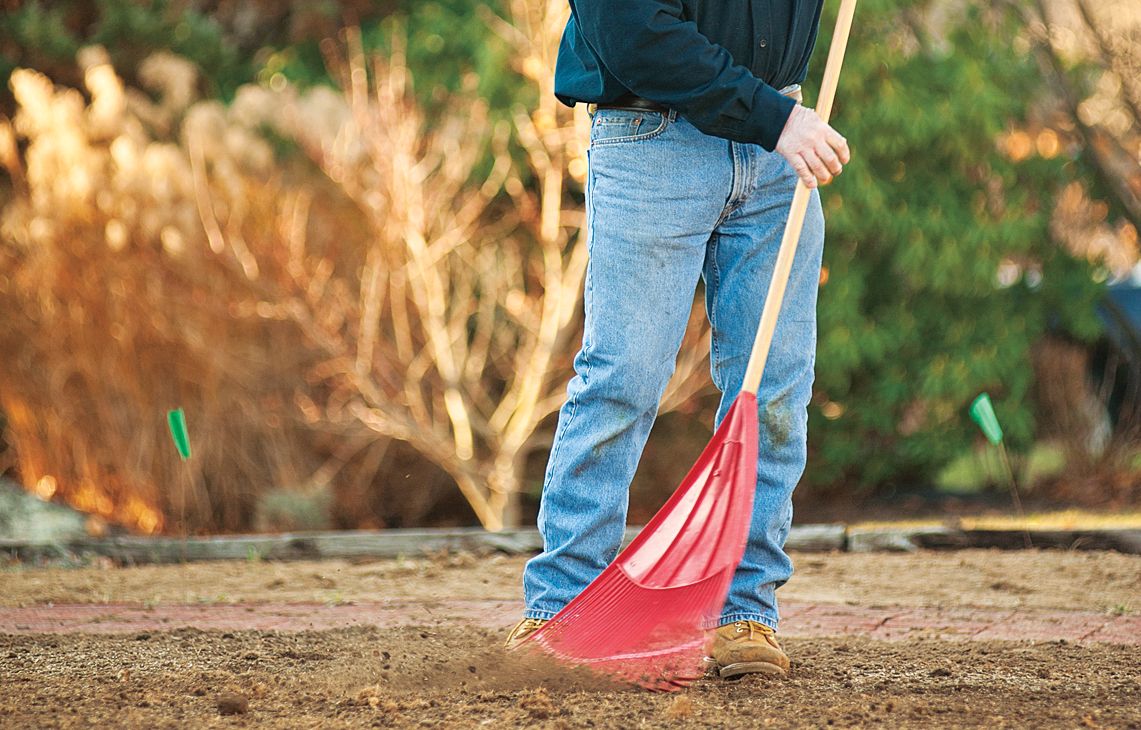
Seeding is the final step in preparing your lawn for new growth. Select a grass seed mix that’s appropriate for your climate and the amount of sunlight your lawn receives. Consider a blend of grass types for better resilience against pests and diseases.
Set your broadcast spreader to its widest opening to ensure maximum seed coverage. Walk in straight lines, overlapping each pass by a few inches to avoid bare spots. After spreading, use the back of a leaf rake to gently swish the seeds into the soil. This light raking helps ensure good seed-to-soil contact, which is essential for germination.
Water the seeded area thoroughly immediately after planting. Keep the soil consistently moist but not waterlogged until the seeds sprout. This usually requires light watering once or twice daily, depending on your climate. Place a thin layer of straw or mulch over the newly seeded area to protect the seeds from birds and excess sunlight. This layer also helps retain moisture, aiding in quicker and more even germination.
Once the grass starts to grow, the frequency of watering will begin to be reduced, but the duration will be increased to encourage deep root development. Avoid mowing until the grass reaches about 3 inches in height to give the new grass time to establish strong roots.
Our Conclusion
Rejuvenating a dying lawn is a labor-intensive process, but the results are rewarding. By following these steps—from removing old sod to nurturing new seeds—you can transform a patchy, unhealthy lawn into a lush, green oasis. It may take several weeks to see significant improvement, but with proper care, your rejuvenated lawn will thrive for years to come.
Required Tools
 Shovel
Shovel Wheelbarrow
Wheelbarrow Sod cutter
Sod cutter Tiller
Tiller Broadcast spreader
Broadcast spreader Grading rake
Grading rake Leaf rake
Leaf rake
